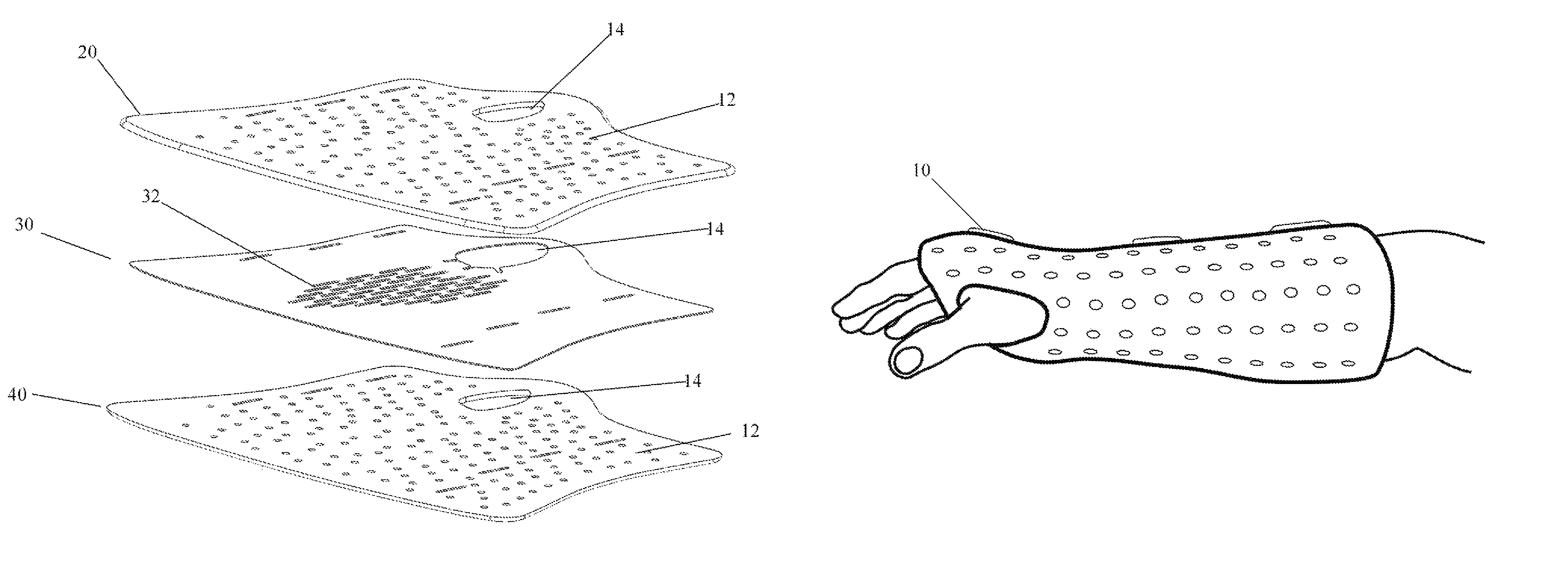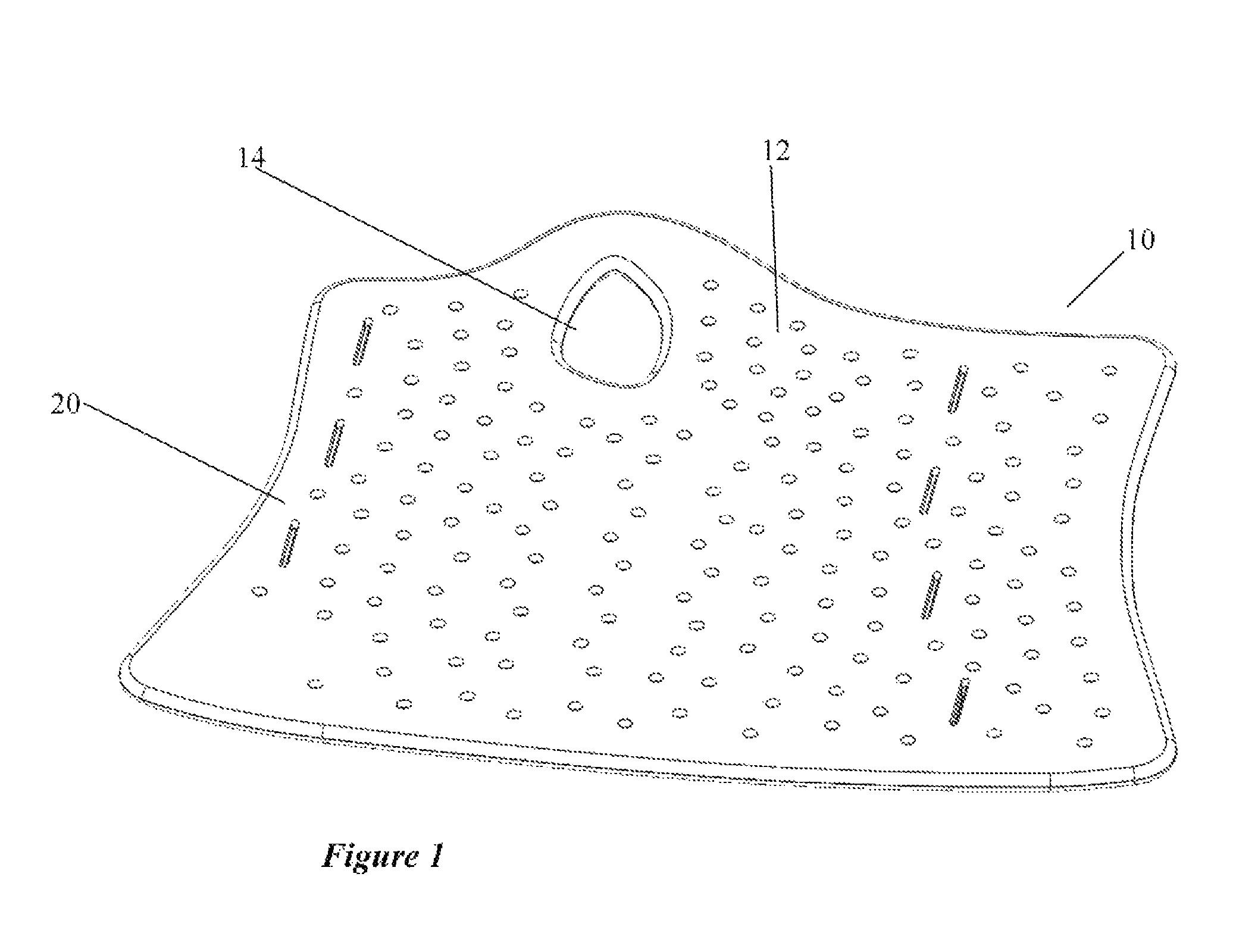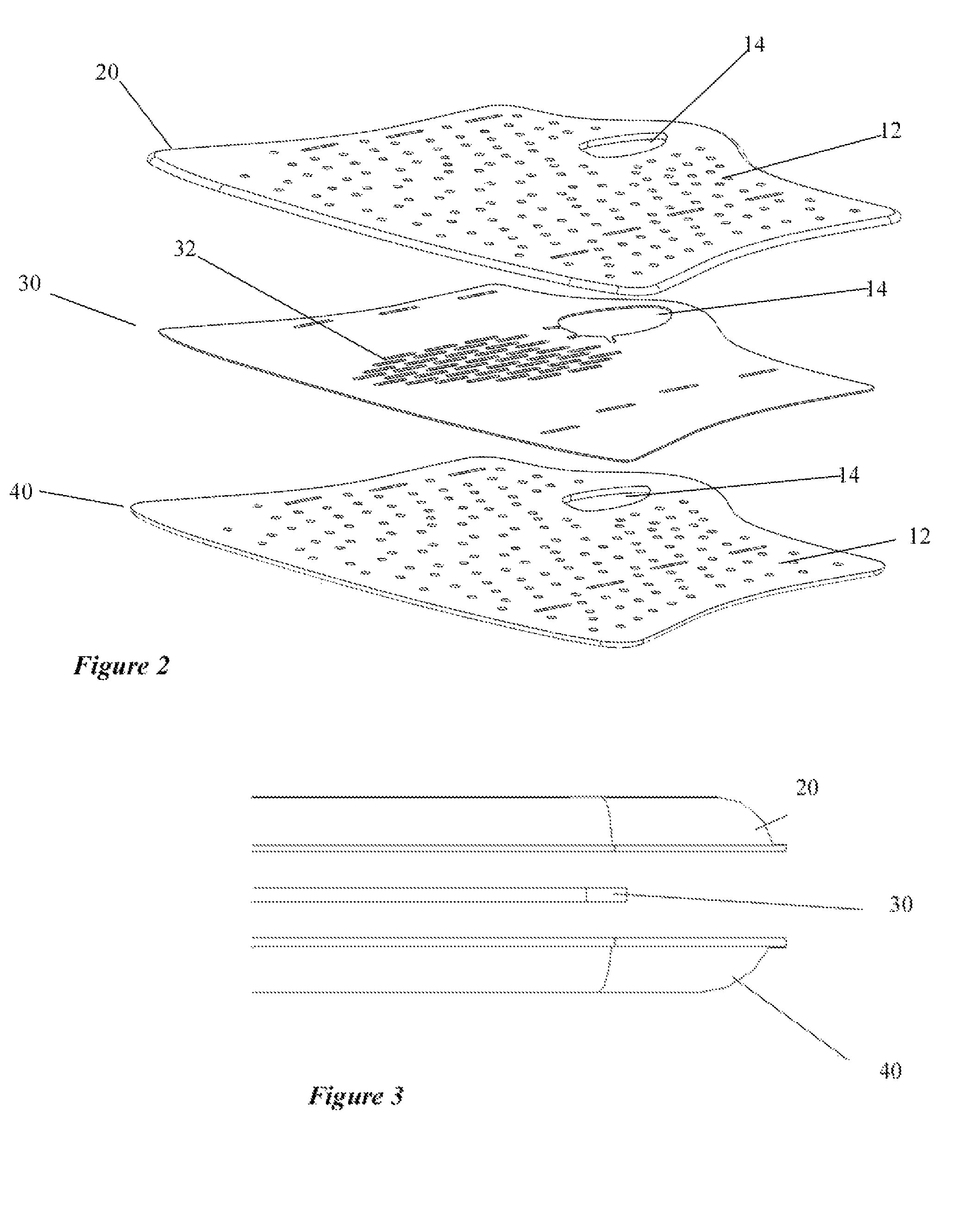Orthopedic system for immobilizing and supporting body parts
a technology of orthopedic systems and body parts, applied in the field of orthopedic systems for immobilizing and supporting human and or animal body parts, can solve the problems of difficult removal, difficult visualization of fractures with x-ray, messy application of casts in this way, etc., and achieves less user dependence, time-consuming, and less time or manipulation.
- Summary
- Abstract
- Description
- Claims
- Application Information
AI Technical Summary
Benefits of technology
Problems solved by technology
Method used
Image
Examples
Embodiment Construction
[0080]A preferred embodiment of the present invention is illustrated in FIGS. 1-29. It is to be expressly understood that the descriptive embodiments are provided herein for explanatory purposes only and are not meant to unduly limit the claimed inventions. The exemplary embodiments describe the present invention in terms of cast systems used for immobilizing and supporting body part as shown in FIGS. 1-29. It is to be understood that the present invention is intended for use with other types of medical, sports, veterinary and other types of uses.
Overview
[0081]The system, in a preferred embodiment, provides a unitized casting system that is far superior to previous systems. The system of a preferred embodiment of the present invention, as used as a cast, is shown in FIGS. 1-6. This cast system is illustrated as a wrist cast but it is to be expressly understood that it can be used for any type of casting situation, such as but not limited to foot casts, neck casts, leg casts, arm cas...
PUM
 Login to View More
Login to View More Abstract
Description
Claims
Application Information
 Login to View More
Login to View More - R&D
- Intellectual Property
- Life Sciences
- Materials
- Tech Scout
- Unparalleled Data Quality
- Higher Quality Content
- 60% Fewer Hallucinations
Browse by: Latest US Patents, China's latest patents, Technical Efficacy Thesaurus, Application Domain, Technology Topic, Popular Technical Reports.
© 2025 PatSnap. All rights reserved.Legal|Privacy policy|Modern Slavery Act Transparency Statement|Sitemap|About US| Contact US: help@patsnap.com



